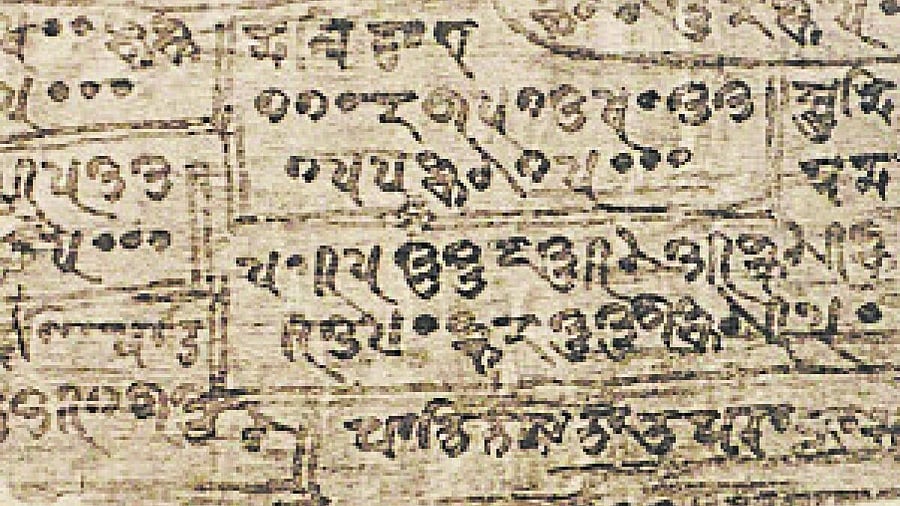
Bakshali.
Credit: DH Photos
The discovery of zero as India’s single biggest contribution to the world of mathematics is well known. But do you know that ancient Indian scholars knew about Pythagoras' theorem, the Sine Function, the Fibonacci Sequence and even derived the first exact formula for Pi, much before the West? Do you know that Gautam Buddha, before enlightenment, was a skilled number lover?
A group of mathematicians and Indologists has recently presented much such information and anecdotes, documented in ancient manuscripts, at a conference in Delhi to popularise India’s lesser-known but fundamental contribution to mathematics as is currently known.
“The way we write our numbers today comes from India. It is perhaps India’s greatest contribution to our daily lives. Any number, regardless of its size, can be written using 10 symbols. This is a vast improvement over Roman numerals,” said Manjul Bhargava, a professor of mathematics at Princeton University and winner of the Fields Medal in 2014.
Apart from zero, Bhargava listed India’s ten other equally fundamental gifts—and a few more—to the world of mathematics that travelled to Europe via the Arabian route and returned as Western mathematical concepts.
Take Baudhayana’s Sulbasutra, for example. Major Vedic ceremonies and sacrifices used to be performed before the altars, the construction of which led to investigations in geometry. The results are reflected in the genre of texts known as Sulbasutras. In one of these texts, dated to the eighth century BCE, there was a formulation of the same theorem that was later ascribed to Pythagoras.
“The first place that we know of where the theorem is explicitly stated for a general triangle in the way we describe today, is Baudhayana’s Sulbasutra,” Bhargava said.
From the middle of the first millennium CE, Indic mathematics made advances, which proved pivotal for the development of the discipline. Successive generations of scholars built on, argued with and refined one another’s work to accelerate insights in trigonometry and algebraic solutions.
In the seventh century, Brahmagupta formulated rules for the arithmetic of zero and negative numbers. A century later, Virahanka proposed an elegant solution on how to set up the poetic metres in Sanskrit poetry. The same solution became popular as the Fibonacci sequence after another 500 years.
From Panini’s mathematics of language – the first example of a generative grammar of a natural language – to the seminal contributions made by Aryabhata, Bhaskara, Pingala, and Madhava, India has a rich history in mathematics, most of which was forgotten, he says. Madhava’s exact formula for pi as an infinite series laid the foundation of calculus, discovered by the Kerala school of mathematicians.
Bhargava spoke at the India International Centre conference organised by India’s top mathematicians. The conference was accompanied by a unique exhibition that displayed nearly 50 ancient mathematical manuscripts, besides showing a glimpse of the famous Bakshali Manuscript – a 3rd to 4th century Indian mathematical text written on birch bark - and other items depicting the evolution of Indian mathematics.
“We plan to take the exhibition to other cities like Mumbai, Ahmedabad, Chennai and Bengaluru as nobody in the current generation seems to know much about the rich history of Indian mathematics,” Sudha Gopalakrishnan, founder director, National Mission for Manuscript, and one of the brains behind the conference, told DH.
